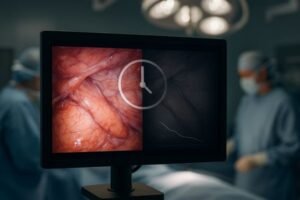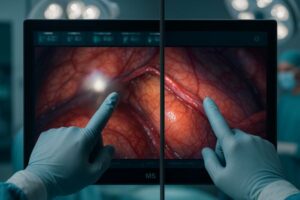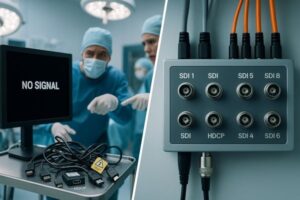Many assume that a high-resolution display can show any image clearly, but this overlooks a critical detail. Scaling an image to fit a screen can introduce artifacts and blur fine details, compromising diagnostic integrity.
Native resolution in medical displays means every pixel of the image maps directly to the physical pixel grid, avoiding scaling or interpolation and ensuring diagnostic accuracy, consistency, and clinical confidence.
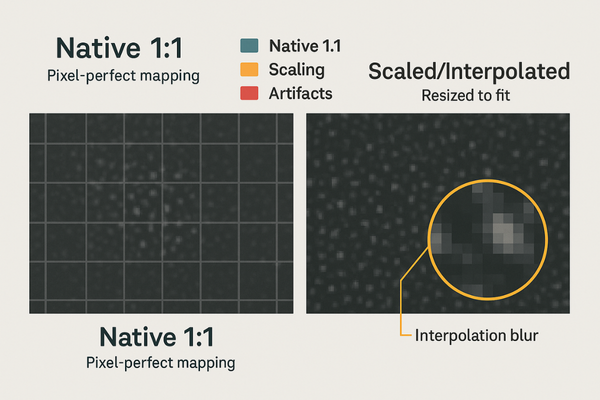
The term "resolution" is often used loosely, but in the context of medical imaging, its precise meaning is paramount. Unlike in consumer electronics where scaling an image to fit a screen is a common and acceptable practice, a diagnostic environment demands absolute fidelity. Understanding the concept of native resolution1 is the first step toward appreciating why a professional medical display monitor2 is fundamentally different from a standard computer monitor. It is the bedrock upon which diagnostic accuracy and clinical confidence are built.
Defining Native Resolution in Medical Displays
When a display’s resolution is mentioned, it can refer to the resolution of the image being sent to it or the display’s own physical pixel count. This ambiguity can lead to significant misunderstandings about image quality.
Native resolution is the fixed, physical number of pixels on a display. In medical monitors, it ensures a perfect one-to-one alignment between the image data and the hardware, preventing any form of scaling.
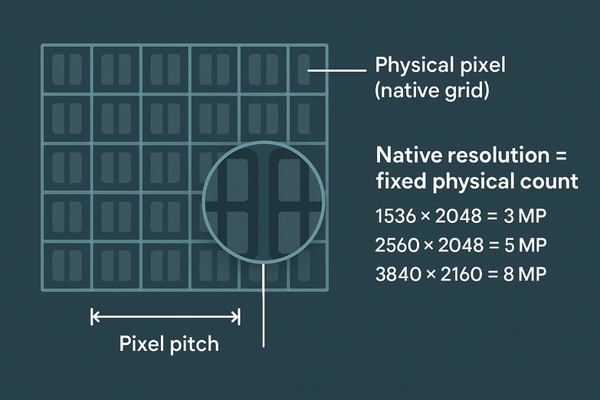
Native resolution refers to the exact number of physical horizontal and vertical pixels that make up a display panel. For medical imaging monitors, this is not just a technical specification; it is a promise of fidelity. It means that when an image with a matching resolution is displayed, each pixel from the source data aligns perfectly with a single physical pixel on the screen. There is no guesswork, no approximation, and no software-driven scaling. While a consumer display might acceptably stretch or shrink an image to fit, this is unacceptable for diagnostic tasks. A quality clinical display3 like the MD26C used at its native resolution4 ensures pixel-perfect rendering, which is the foundation for maintaining accurate grayscale representation and providing physicians with the confidence to make a diagnosis.
Why Native Resolution Matters for Diagnostic Accuracy
It might seem that as long as an image fits on the screen, its quality is maintained. However, any deviation from a 1:1 pixel mapping forces the display to make assumptions, which can obscure critical information.
Diagnostic accuracy relies on pixel-perfect data. Running a monitor at its native resolution prevents image processing from blurring micro-calcifications or other subtle structures, minimizing diagnostic variability.
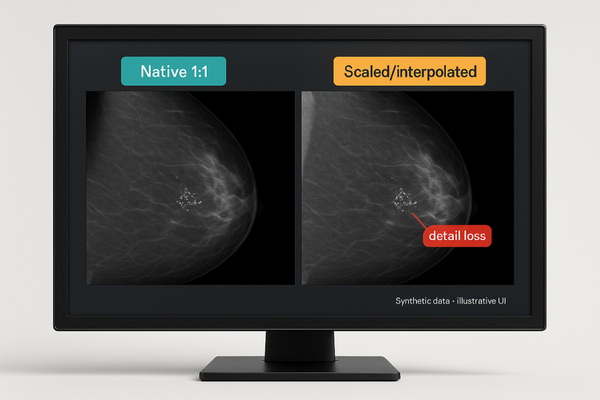
Diagnostic imaging monitors are purpose-built to reveal subtle anatomical structures and pathologies that may be only a few pixels in size. The entire system, from the imaging modality to the display, is calibrated to ensure that these details are preserved. When an image is scaled up or down to fit a non-native resolution5, this chain of fidelity is broken. The display’s internal software must use an interpolation algorithm to either create new pixels or merge existing ones. This process, no matter how advanced, inevitably introduces a degree of softness or blurring. For a radiologist searching for faint micro-calcifications in a mammogram or subtle vascular details in an angiogram, this slight loss of sharpness can be the difference between detection and a missed finding. By operating monitors exclusively at their native resolution, radiologists ensure that what they see is an unadulterated representation of the source data. This practice is essential for medical imaging solutions and is a core principle in minimizing diagnostic variability.
Scaling, Interpolation, and Their Clinical Risks
The risk of scaling is often underestimated. The artifacts it creates may not be obvious, but they can subtly alter the appearance of an image in ways that could mislead a clinical interpretation.
When a diagnostic monitor scales an image, it invents pixel data through interpolation. This process can introduce artifacts or hide fine details, creating misleading visual cues and undermining diagnostic confidence.
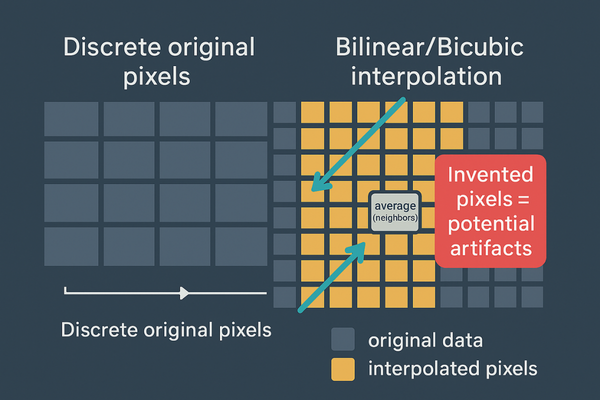
How Interpolation Works
When a diagnostic monitor is sent a signal that does not match its native resolution6, it is forced to perform a mathematical operation called interpolation to make the image fit. If the source image is smaller, the display must invent new pixels to fill the gaps. If it is larger, it must discard data or average adjacent pixels.
Why Scaling Risks Clinical Accuracy
The resulting image is no longer a true representation of the original data. This process can soften the sharp edges of a bone fracture, making it appear less distinct. It can average out the fine texture of a lung nodule, altering its perceived characteristics. Most insidiously, it can produce visual artifacts7—patterns that were not present in the original image—that might be mistaken for pathology. For this reason, radiology monitors must always be operated at their native resolution. For a 3MP diagnostic display like the MD33G, this means running it at its native 1536×2048 to avoid these risks, especially in modalities where pixel-level precision is indispensable.
Native Resolution vs. Pixel Pitch and Screen Size
Two displays with the same native resolution can look very different. A larger screen will have larger pixels, which can affect perceived sharpness and the optimal viewing distance for the user.
Resolution alone does not define clarity. The relationship between native resolution, pixel pitch (pixel density), and screen size determines the actual spatial accuracy and perceived sharpness of a monitor.
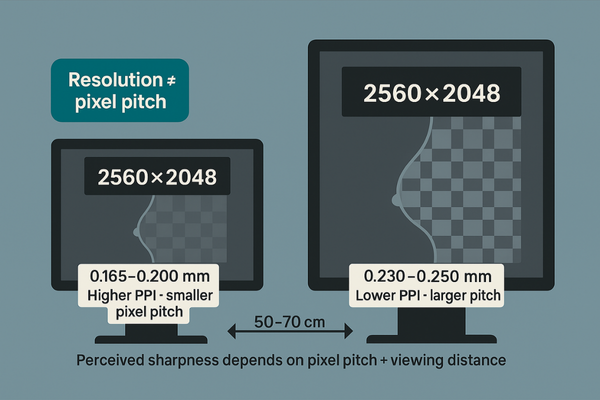
Native resolution provides the total pixel count, but it does not tell the whole story about a display’s clarity. The physical size of the screen and the resulting pixel pitch—the distance between the centers of adjacent pixels—are equally important. For example, a 5MP diagnostic monitor8 designed for mammography, such as the MD52G, concentrates over five million pixels into a relatively small area, resulting in a very fine pixel pitch. Conversely, a display with the same resolution stretched across a much larger screen would have a larger pixel pitch9, and individual pixels might become visible, leading to a "pixelated" appearance.
| Resolution | Typical Application | Benefit of Native Display |
|---|---|---|
| 2MP/3MP | General Radiology (CT/MRI) | Ensures clarity for routine review without unnecessary processing. |
| 5MP | Mammography | Preserves micro-calcifications and fine tissue detail with no loss. |
| 8MP/12MP | Multi-Modality, Fusion | Allows multiple native-resolution images on one screen without scaling. |
Impact on Multi-Modality Imaging and PACS Workflow
Radiologists today rarely look at a single study in isolation. A typical workflow involves comparing multiple images from different modalities, each with its own native resolution, which can create a logistical headache.
High-native-resolution displays allow radiologists to view multiple studies from different modalities side-by-side without scaling, distortion, or toggling between monitors, greatly improving workflow efficiency.
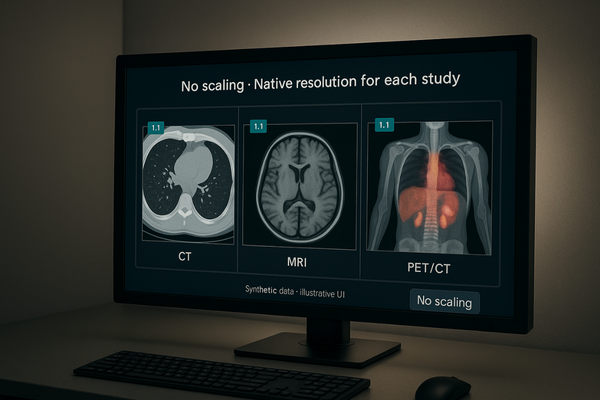
Modern PACS workflows are increasingly complex, often requiring the simultaneous review of images from CT, MRI, ultrasound, and PET/CT. A significant bottleneck in this process can be the need to switch between different monitors or constantly resize windows, which often forces images to be displayed at non-native resolutions. This is where medical display monitors10 with very high native resolutions become transformative. An 8MP diagnostic display11 like the MD85CA offers a large canvas of 3840×2160 physical pixels. This allows a radiologist to arrange multiple studies on a single screen, each one displayed at its native 1:1 pixel mapping. This eliminates scaling artifacts, ensures distortion-free comparison, and removes the friction of toggling between displays. By supporting an integrated diagnostic workflow on one screen, high-native-resolution monitors directly improve both speed and accuracy.
Native Resolution and DICOM Compliance
DICOM compliance is essential for ensuring perceptually linear grayscale, but its effectiveness can be undermined. This occurs when scaling alters pixel values before they are even rendered by the DICOM-calibrated system.
DICOM Part 14 ensures consistent grayscale perception, but its integrity is only guaranteed at native resolution. Scaling compromises this by altering pixel data before the DICOM curve is applied.
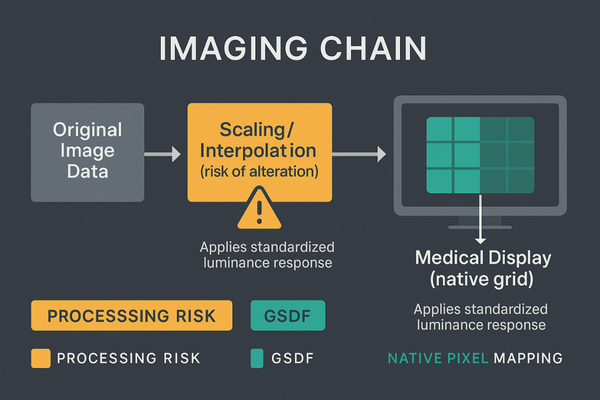
DICOM compliance, specifically conformance to the Part 14 Grayscale Standard Display Function (GSDF)12, is a cornerstone of diagnostic imaging. It ensures that the relationship between the digital values in an image file and the luminance produced by the display is consistent and perceptually linear. However, this calibration assumes it is being applied to the original, untampered pixel data. When a display is forced to scale an image, it fundamentally alters that data. The interpolation algorithms change the original pixel values before they are even processed by the display’s DICOM lookup table. Therefore, even on the best DICOM compliant monitors13, displaying an image at a non-native resolution can compromise its diagnostic integrity.
Future Trends: 4K and 8MP Native Resolution in Radiology
The amount of data generated by modern imaging equipment continues to grow. Resolutions that were once considered high-end are quickly becoming the standard for routine work.
As imaging datasets become larger, 4K (8MP) native resolution is becoming the new standard for radiology workstations, enabling uncompromised multi-study comparisons and future-proofing the reading room.
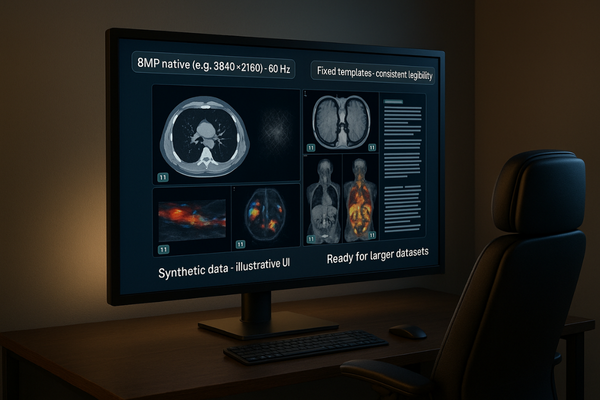
Preparing for Larger Datasets
As scanners become more powerful, the datasets they produce are growing in size and complexity. Radiology workstation monitors are rapidly adopting 4K medical monitors14 as a new baseline native resolution.
Benefits for Integrated Departments
A 4K or 8MP diagnostic display allows for multiple images to be shown side-by-side without scaling. Standardizing with operating room monitors and diagnostic display15s ensures consistency across radiology and surgical environments, creating seamless collaboration.
Practical Recommendations: Suitable Monitor Models
Based on clinical needs, the following models are recommended:
- MD26C — 24" 2.3MP Clinical Review Monitor: For DR, CT, MRI acquisition and PACS review.
- MD33G — 3MP Diagnostic Monitor: Ideal for daily radiology workstation use at native resolution.
- MD52G — 5MP Diagnostic Display: Designed for mammography, ensuring pixel-level accuracy.
- MD85CA — 8MP Diagnostic Display: Best for multi-modality PACS workflows and future-proof setups.
Conclusion
Operating a medical display at its native resolution is a fundamental practice for ensuring diagnostic integrity and minimizing clinical risk. By preserving a true 1:1 pixel mapping, radiology monitors guarantee that every detail in a medical image is faithfully represented. 🔍
👉 For expert advice and Reshin’s native-resolution diagnostic display solutions, contact info@reshinmonitors.com.
-
Explore this link to understand how native resolution impacts diagnostic accuracy in medical imaging. ↩
-
Learn about the unique features of medical display monitors that ensure clinical confidence and accuracy. ↩
-
Exploring the features of clinical displays can help you appreciate their importance in medical imaging and diagnostics. ↩
-
Understanding native resolution is crucial for ensuring image fidelity in medical imaging, which directly impacts diagnostic accuracy. ↩
-
Understanding native resolution is crucial for ensuring optimal image quality in diagnostic imaging, which can impact patient outcomes. ↩
-
Understanding native resolution is crucial for ensuring accurate image representation in diagnostic monitors. ↩
-
Exploring visual artifacts helps in recognizing potential misinterpretations in medical images, enhancing diagnostic accuracy. ↩
-
Exploring the advantages of 5MP monitors can enhance your knowledge of their role in medical imaging and diagnostics. ↩
-
Understanding pixel pitch is crucial for evaluating display quality, as it affects clarity and detail in images. ↩
-
Explore how medical display monitors enhance diagnostic accuracy and workflow efficiency in radiology. ↩
-
Learn about the transformative impact of 8MP diagnostic displays on image clarity and radiologist productivity. ↩
-
Understanding GSDF is crucial for ensuring accurate diagnostic imaging and display calibration. ↩
-
Explore how DICOM compliant monitors enhance image quality and maintain diagnostic integrity. ↩
-
Explore this link to understand how 4K medical monitors enhance image clarity and diagnostic accuracy in radiology. ↩
-
Learn about the impact of diagnostic displays on medical imaging quality and workflow efficiency. ↩

